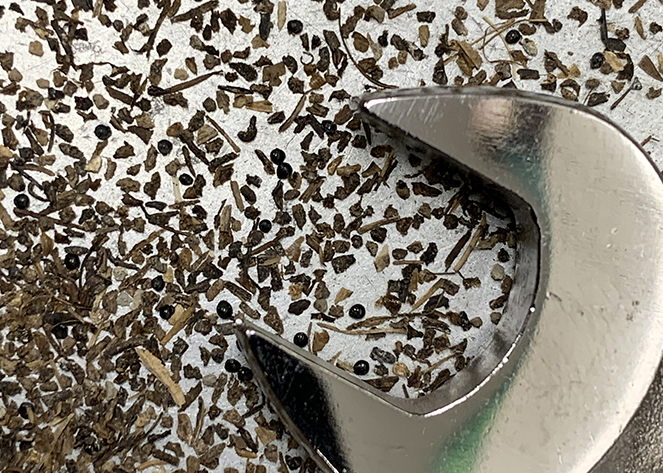Drought Enhances Palmer Amaranth Threat

Palmer amaranth could pose a greater threat than ever to North Dakota because of the widespread drought, NDSU Extension specialists are warning producers.
Because of the extreme drought conditions across much of the state, ranchers are purchasing hay and other feed to supplement existing feed resources, which opens the door to unwanted weeds such as Palmer amaranth.
“Transported hay and feed are one of the primary methods of dispersal and introduction for noxious weeds,” says Miranda Meehan, NDSU Extension livestock stewardship specialist.
Grain screenings, a cattle feed, can be another source of Palmer amaranth, a very aggressive, difficult-to-control weed found in North Dakota for the first time in 2018. It has been confirmed in 13 counties, and Extension agents and specialists are working with producers to keep it from spreading.
“While Palmer amaranth looks like a pigweed, it is resistant to many of our commonly used herbicide modes of action, it is extremely prolific in its seed production and it can spread like wildfire,” says Brian Jenks, weed scientist at the NDSU’s North Central Research Extension Center. “The best way to control Palmer amaranth is not having it enter your farm.”
Here are ways producers can reduce the spread of the weed:
Plant clean seed.
Test screenings for Palmer amaranth prior to feeding them to livestock.
Grind screenings finely.
Compost manure to reduce seed viability.
However, if the manure isn’t composted properly and it’s spread on a field, seeds could turn into plants, and one Palmer amaranth plant can produce up to a million seeds in a year.
“So be aware of the noxious weeds that may be present when purchasing hay and feed, and if necessary, purchase hay and feed from another location,” advises Joe Ikley, NDSU Extension weed specialist.
FOR MORE INFORMATION:
Joe Ikley, 701-231-8157, joseph.ikley@ndsu.edu
www.ag.ndsu.edu/palmeramaranth


